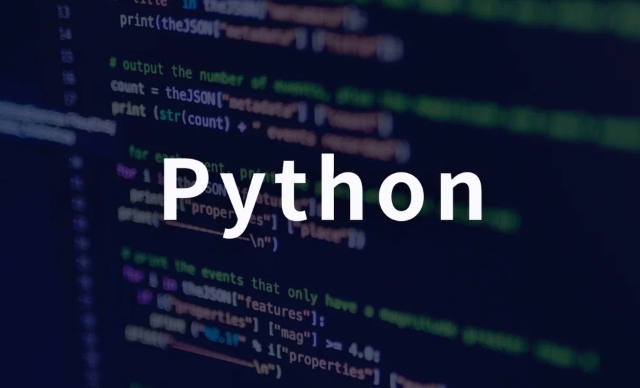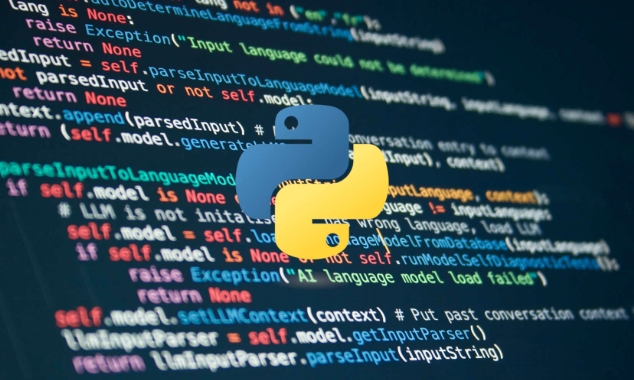To deeply program Python, you need to master advanced file operation skills such as batch processing of files, efficient reading and writing large files, parsing structured files, and using temporary files. 1. When processing files in batches, use Path.iterdir() to get the list, filter file types, try-except wrapping operations, and ensure closing with open. The path stitching is os.path.join or Path objects; 2. It is recommended to read and write large files line by line or chunk to reduce memory usage, and use buffering mechanisms when writing; 3. When parsing structured files, you can use json, csv modules and PyYAML libraries to pay attention to the consistency of field names and data types; 4. To improve efficiency, you can use tempfile to create temporary files, or use StringIO/BytesIO to process data in memory to avoid frequent disk access.

If you plan to dig deep into Python programming, mastering advanced file operations is almost a must. It is not just as simple as reading and writing text, but it includes skills such as how to efficiently handle large amounts of files, cross-platform compatibility, file structure analysis, and even automated file management. This article will directly tell you a few practical advanced skills.

How to batch process files and avoid common pitfalls
When processing a large number of files, many people will write a loop traversal directory directly, but it is easy to ignore some key points. For example, duplicate file names, wrong path formats, permission issues, etc. It is recommended to use os.listdir() or the more recommended pathlib.Path.iterdir() to get the file list.
In actual operation, you can do this:

- First filter out the file types you need to process (such as ending with
.txt) - Use
try-exceptto wrap each operation to prevent an error in a file and cause the entire process to be interrupted. - Use
with open(...)to make sure every file is closed correctly
In addition, if you work in a cross-platform environment (for example, if you get a script written by Windows to run on Linux), try to avoid hard-coded / or \ as much as possible, and use os.path.join() or Path / operator instead.
How to read and write large files efficiently
When reading and writing large files, many people are used to loading them with read() at one time, but doing so can easily occupy a lot of memory. For files that are hundreds of MB or even larger, line-by-line reading or chunked reading is recommended.

For example:
- Read line by line: Use
for line in open(...), only one line is loaded at a time - Block reading: Use
read(size)to read a fixed size each time, suitable for binary files or log analysis
Try to use a buffering mechanism when writing, such as saving data to a certain amount before writing it to reduce the number of disk I/O times. You can also consider using buffering parameter to control the buffer size.
How to parse and generate structured files (JSON, CSV, YAML)
Python has built-in support for JSON and CSV, and third-party libraries such as PyYAML can handle YAML files. These formats are very common in data exchange and configuration files.
Operation suggestions:
- JSON: Use
json.load()/json.dump(), pay attention to handling nested structures - CSV: Use
csv.DictReader/csv.writer, suitable for processing tabular data - YAML: Use
yaml.load()/yaml.dump()after installingpyyaml, note that the default unsafe loader
When processing these files, pay attention to whether the field names are consistent and whether the data types are converted correctly to avoid runtime errors. For example, numbers in CSV may be read as strings, and errors are prone to occur during subsequent calculations.
Tips: Use temporary files and memory files to improve efficiency
Sometimes you don't want to leave intermediate files on disk, or want to speed up read and write speeds, you can consider using:
-
tempfilemodule creates temporary files or directories, and it will be cleaned automatically when the program exits. -
io.StringIOandio.BytesIOemulate file objects, suitable for processing text or binary data in memory
These methods are useful during testing, caching, or intermediate processing phases to avoid frequent disk access.
Basically all this is it. Advanced file operations are not mysterious, but there are many details, and mistakes are prone to errors if you are not careful. Mastering these points will make you more efficient and stable when processing files.
The above is the detailed content of Mastering Advanced File Operations in Python. For more information, please follow other related articles on the PHP Chinese website!

Hot AI Tools

Undress AI Tool
Undress images for free

Undresser.AI Undress
AI-powered app for creating realistic nude photos

AI Clothes Remover
Online AI tool for removing clothes from photos.

Clothoff.io
AI clothes remover

Video Face Swap
Swap faces in any video effortlessly with our completely free AI face swap tool!

Hot Article

Hot Tools

Notepad++7.3.1
Easy-to-use and free code editor

SublimeText3 Chinese version
Chinese version, very easy to use

Zend Studio 13.0.1
Powerful PHP integrated development environment

Dreamweaver CS6
Visual web development tools

SublimeText3 Mac version
God-level code editing software (SublimeText3)

Hot Topics
 Polymorphism in python classes
Jul 05, 2025 am 02:58 AM
Polymorphism in python classes
Jul 05, 2025 am 02:58 AM
Polymorphism is a core concept in Python object-oriented programming, referring to "one interface, multiple implementations", allowing for unified processing of different types of objects. 1. Polymorphism is implemented through method rewriting. Subclasses can redefine parent class methods. For example, the spoke() method of Animal class has different implementations in Dog and Cat subclasses. 2. The practical uses of polymorphism include simplifying the code structure and enhancing scalability, such as calling the draw() method uniformly in the graphical drawing program, or handling the common behavior of different characters in game development. 3. Python implementation polymorphism needs to satisfy: the parent class defines a method, and the child class overrides the method, but does not require inheritance of the same parent class. As long as the object implements the same method, this is called the "duck type". 4. Things to note include the maintenance
 Python Function Arguments and Parameters
Jul 04, 2025 am 03:26 AM
Python Function Arguments and Parameters
Jul 04, 2025 am 03:26 AM
Parameters are placeholders when defining a function, while arguments are specific values ??passed in when calling. 1. Position parameters need to be passed in order, and incorrect order will lead to errors in the result; 2. Keyword parameters are specified by parameter names, which can change the order and improve readability; 3. Default parameter values ??are assigned when defined to avoid duplicate code, but variable objects should be avoided as default values; 4. args and *kwargs can handle uncertain number of parameters and are suitable for general interfaces or decorators, but should be used with caution to maintain readability.
 Explain Python generators and iterators.
Jul 05, 2025 am 02:55 AM
Explain Python generators and iterators.
Jul 05, 2025 am 02:55 AM
Iterators are objects that implement __iter__() and __next__() methods. The generator is a simplified version of iterators, which automatically implement these methods through the yield keyword. 1. The iterator returns an element every time he calls next() and throws a StopIteration exception when there are no more elements. 2. The generator uses function definition to generate data on demand, saving memory and supporting infinite sequences. 3. Use iterators when processing existing sets, use a generator when dynamically generating big data or lazy evaluation, such as loading line by line when reading large files. Note: Iterable objects such as lists are not iterators. They need to be recreated after the iterator reaches its end, and the generator can only traverse it once.
 Python `@classmethod` decorator explained
Jul 04, 2025 am 03:26 AM
Python `@classmethod` decorator explained
Jul 04, 2025 am 03:26 AM
A class method is a method defined in Python through the @classmethod decorator. Its first parameter is the class itself (cls), which is used to access or modify the class state. It can be called through a class or instance, which affects the entire class rather than a specific instance; for example, in the Person class, the show_count() method counts the number of objects created; when defining a class method, you need to use the @classmethod decorator and name the first parameter cls, such as the change_var(new_value) method to modify class variables; the class method is different from the instance method (self parameter) and static method (no automatic parameters), and is suitable for factory methods, alternative constructors, and management of class variables. Common uses include:
 How to handle API authentication in Python
Jul 13, 2025 am 02:22 AM
How to handle API authentication in Python
Jul 13, 2025 am 02:22 AM
The key to dealing with API authentication is to understand and use the authentication method correctly. 1. APIKey is the simplest authentication method, usually placed in the request header or URL parameters; 2. BasicAuth uses username and password for Base64 encoding transmission, which is suitable for internal systems; 3. OAuth2 needs to obtain the token first through client_id and client_secret, and then bring the BearerToken in the request header; 4. In order to deal with the token expiration, the token management class can be encapsulated and automatically refreshed the token; in short, selecting the appropriate method according to the document and safely storing the key information is the key.
 What are Python magic methods or dunder methods?
Jul 04, 2025 am 03:20 AM
What are Python magic methods or dunder methods?
Jul 04, 2025 am 03:20 AM
Python's magicmethods (or dunder methods) are special methods used to define the behavior of objects, which start and end with a double underscore. 1. They enable objects to respond to built-in operations, such as addition, comparison, string representation, etc.; 2. Common use cases include object initialization and representation (__init__, __repr__, __str__), arithmetic operations (__add__, __sub__, __mul__) and comparison operations (__eq__, ___lt__); 3. When using it, make sure that their behavior meets expectations. For example, __repr__ should return expressions of refactorable objects, and arithmetic methods should return new instances; 4. Overuse or confusing things should be avoided.
 How does Python memory management work?
Jul 04, 2025 am 03:26 AM
How does Python memory management work?
Jul 04, 2025 am 03:26 AM
Pythonmanagesmemoryautomaticallyusingreferencecountingandagarbagecollector.Referencecountingtrackshowmanyvariablesrefertoanobject,andwhenthecountreacheszero,thememoryisfreed.However,itcannothandlecircularreferences,wheretwoobjectsrefertoeachotherbuta
 Describe Python garbage collection in Python.
Jul 03, 2025 am 02:07 AM
Describe Python garbage collection in Python.
Jul 03, 2025 am 02:07 AM
Python's garbage collection mechanism automatically manages memory through reference counting and periodic garbage collection. Its core method is reference counting, which immediately releases memory when the number of references of an object is zero; but it cannot handle circular references, so a garbage collection module (gc) is introduced to detect and clean the loop. Garbage collection is usually triggered when the reference count decreases during program operation, the allocation and release difference exceeds the threshold, or when gc.collect() is called manually. Users can turn off automatic recycling through gc.disable(), manually execute gc.collect(), and adjust thresholds to achieve control through gc.set_threshold(). Not all objects participate in loop recycling. If objects that do not contain references are processed by reference counting, it is built-in






